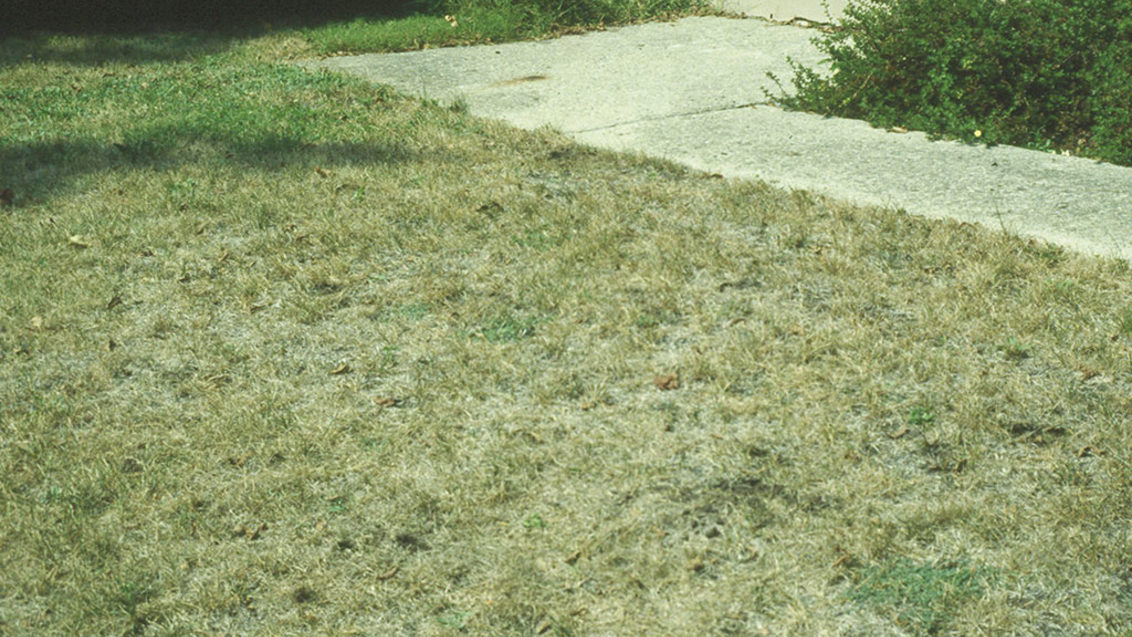Leaf Spot/Melting Out
Drechslera poae
Disease of Foliage and/or Roots
Susceptible Turf
All turfgrass species.
Symptoms
- First appear as small, water-soaked areas that soon become uniformly dark.
- As lesions enlarge and elongate parallel to the leaf axis, the centres become necrotic, and change to brown, then white to a straw colour.
- Lesions on leaves and leaf sheaths are usually distinct and symmetrical.
- When lesions extend across the leaf blade or leaf sheath, the vascular system becomes girdled and the entire leaf or tiller dies and drops from the plant.
- These infections give rise to a reddish brown dry rot that becomes black as it grows.
- Symptoms on the foliage of plants with crown and root rots include wilting and chlorosis and occasionally some leaf spotting, followed by death and browning of the plants.
Conditions Favouring Disease
- Occurs during cool, humid periods
- Temperatures between 5°C and 26°C, optimal is 15°C to 18°C.
- More than 10 hours a day of foliar wetness for several consecutive days.
- Root, rhizome and crown rots may occur during warm, dry periods or during wet periods immediately following dry periods.
- Poor air movement.
- High nitrogen fertility and low mowing height.
Management Tips
Irrigate thoroughly and deeply in the morning.
Mow turf as high as is practical.
- Apply fertilisers as needed, avoid lush/excessive growth.
- Avoid overstimulating the growth of grass in early spring and mid-summer.
- Increase air circulation to speed turf's drying process
- Minimise the amount of shade.
General Comments
Symptoms of this disease may be confused with those of Nigrospora Leaf Spot, Ascochyta Leaf Blight or Dollar Spot.
In severe cases nearly all the leaves and tillers may die, resulting in a severe thinning of turf; hence the name "Melting Out".
Leaf spot also invades roots, rhizomes and crowns of Kentucky Bluegrass.

